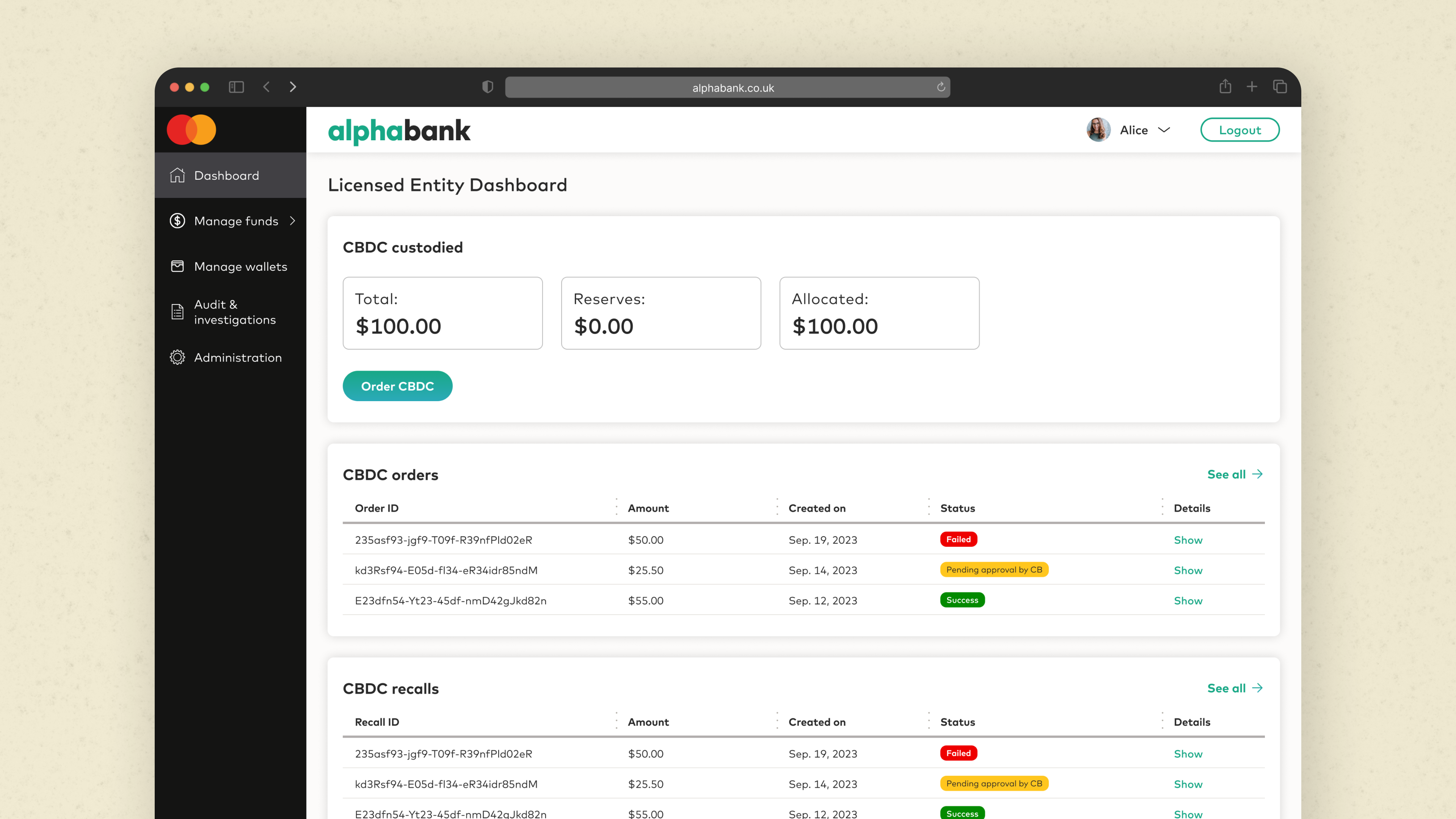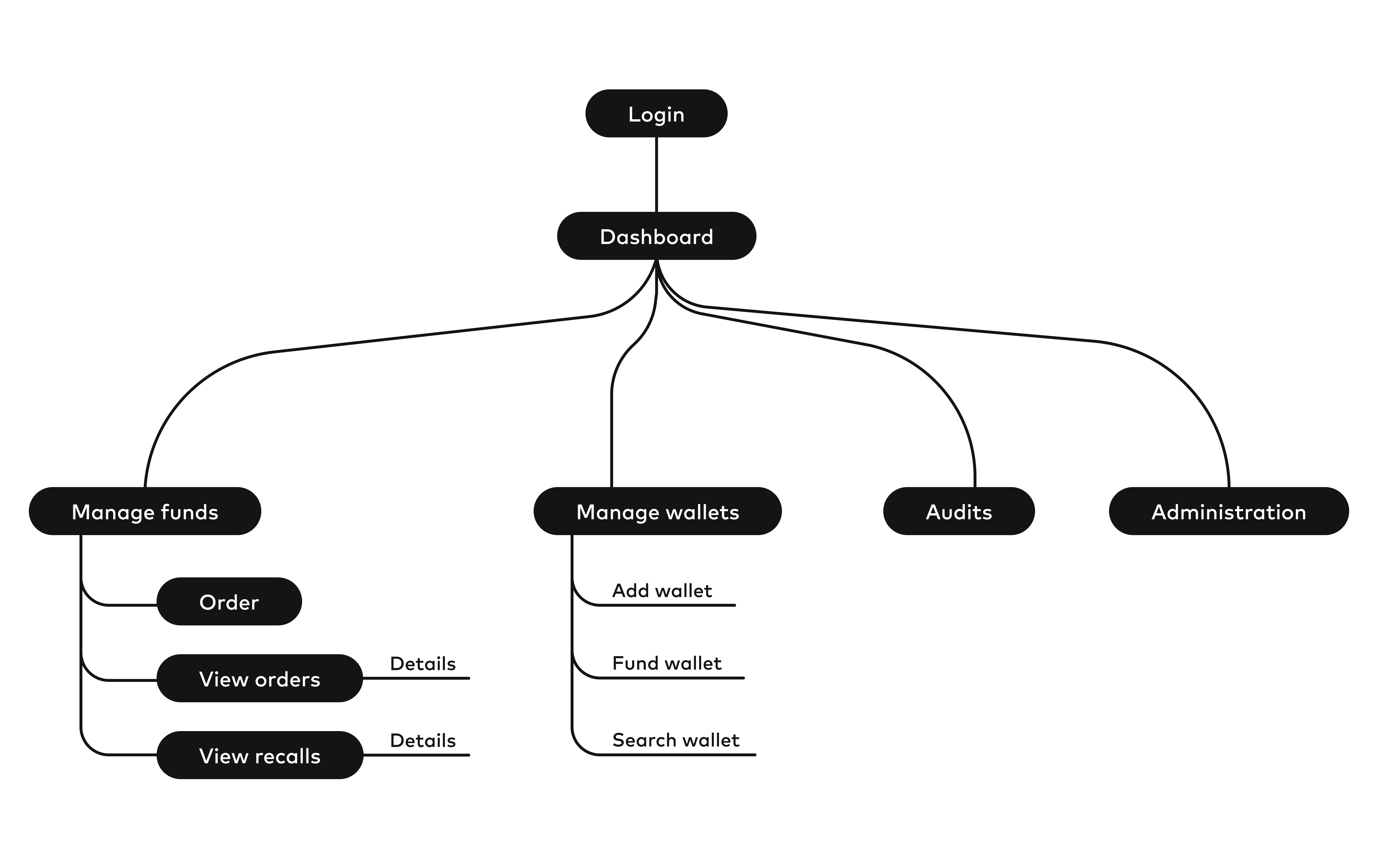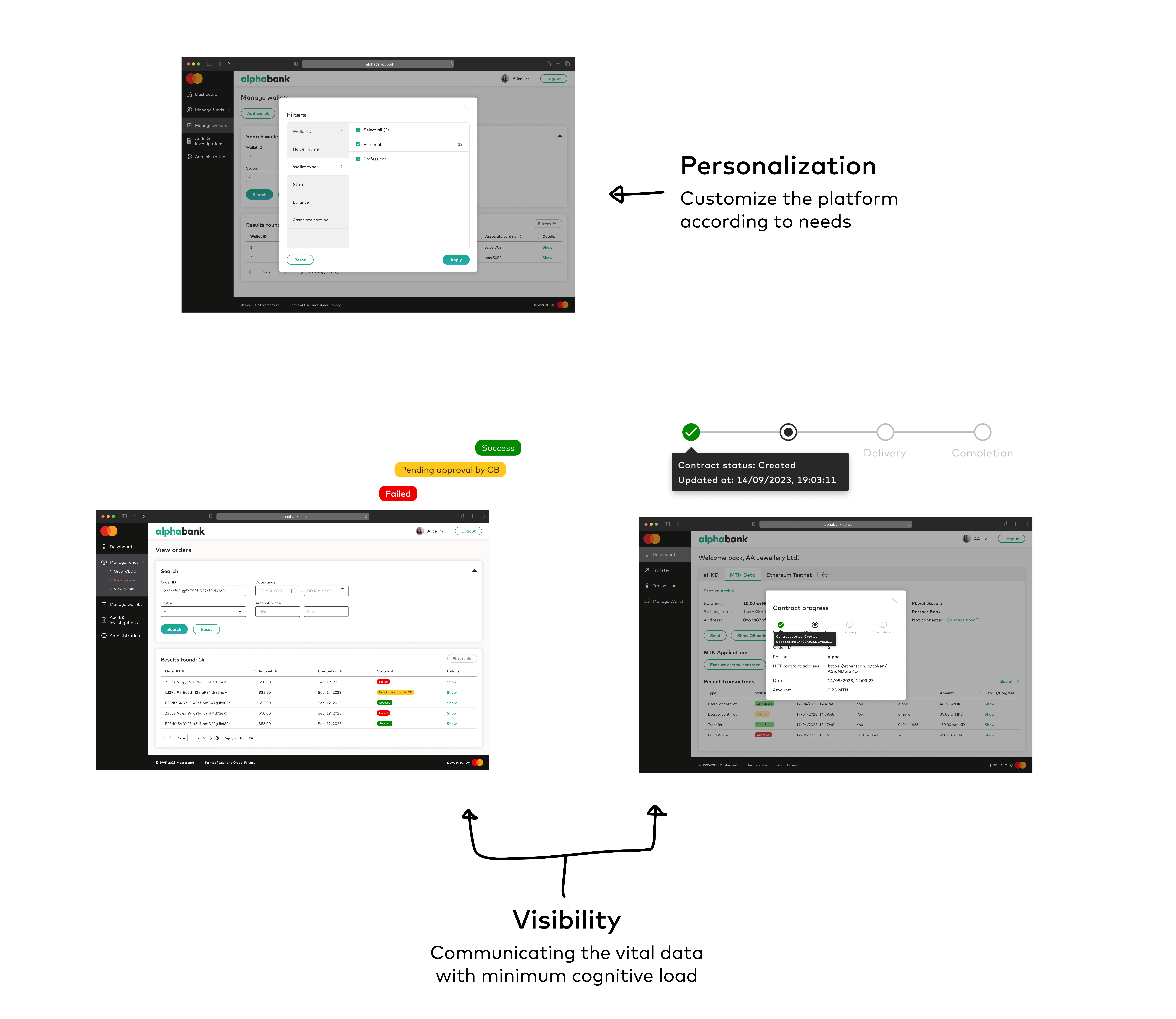Central Bank Digital Currency (CBDC) platforms
Simplifying an emerging technology and empowering the users.

Simplifying an emerging technology and empowering the users.

In early 2024, we designed CBDC platforms for banks and financial institutions to quickly manage, test, and develop their CBDCs. These platforms were an innovative solution to a convoluted and unconventional technology, rendering blockchain and CBDCs more accessible to the end user.
Technologies like cryptocurrencies and blockchain gave birth to a new form of currency called Central Bank Digital Currency (CBDC), a digital currency issued by a country’s central bank to various financial institutions, similar to a fiat currency. This new e-currency brought many new issues and complexities to the economic structure and cybersecurity.
Mastercard had already been researching and developing solutions for CBDCs before banks introduced them. When countries and banks voiced their interest in CBDCs and their applications, Mastercard was able to deliver solutions to the interested parties.
However, these solutions existed as backend programs with limited user interfaces. Their lack of a front end prevented diverse users from understanding and accessing them, and they were still relatively more complex than fiat currency.
Our high-level goals were to:

I led the design for Central Bank (CB) and Licensed Entity (LE) platforms and collaborated with the product and development teams.
The product team helped by researching users and solutions available on the market and conducting user testing at various stages of the design cycle.
The development team assisted me in understanding backend technologies and functionalities.
[For confidentiality, I have shared only high-level market analysis and user research]
Before approaching the design team, the product team researched any existing CBDC platform that provides users with an interface, the type of users who work on these platforms daily, and their challenges.
Insights:
We created a hierarchical map to see the platforms from a user’s perspective and understand their primary and secondary objectives. This map allowed us to form a hypothesis that if we create centralized tools that will enable central banks and financial institutions to manage their CBDCs, view all the information in one place, and focus on their objectives - then the time spent in distilling information and making sound decisions will reduce substantially.

The different teams involved in this project independently brainstormed some questions that a user would ask themself while operating these platforms. Doing so ensured that all the teams aligned with the product's direction and understanding.
As a user,
It’s vital that we establish what the end goals look like and all the teams are aligned with them. These goals can be used as a reference point during design iterations and tracking impact after launch.
We tested the designs with users based on which features they prioritize and focus on and updated them based on the results. Some results confirmed our assumptions, while others challenged them.
Because of the lessons learned from each iteration, I created immersive prototypes that focused on users’ needs and kept the cognitive load minimal. The prototypes fulfilled each functionality from end to end and simulated a near-real-life scenario.

After the design was complete, I handed off the design assets to the development team and assisted them, when required, till the product was ready for launch. Five months after the launch, the new platforms had an overall positive impact on users’ experience. However, 23% of the surveyed users still found the technology and flow of CBDCs confusing. This shortcoming could change over time as users get more hands-on experience, and we can also improve in further platform updates.